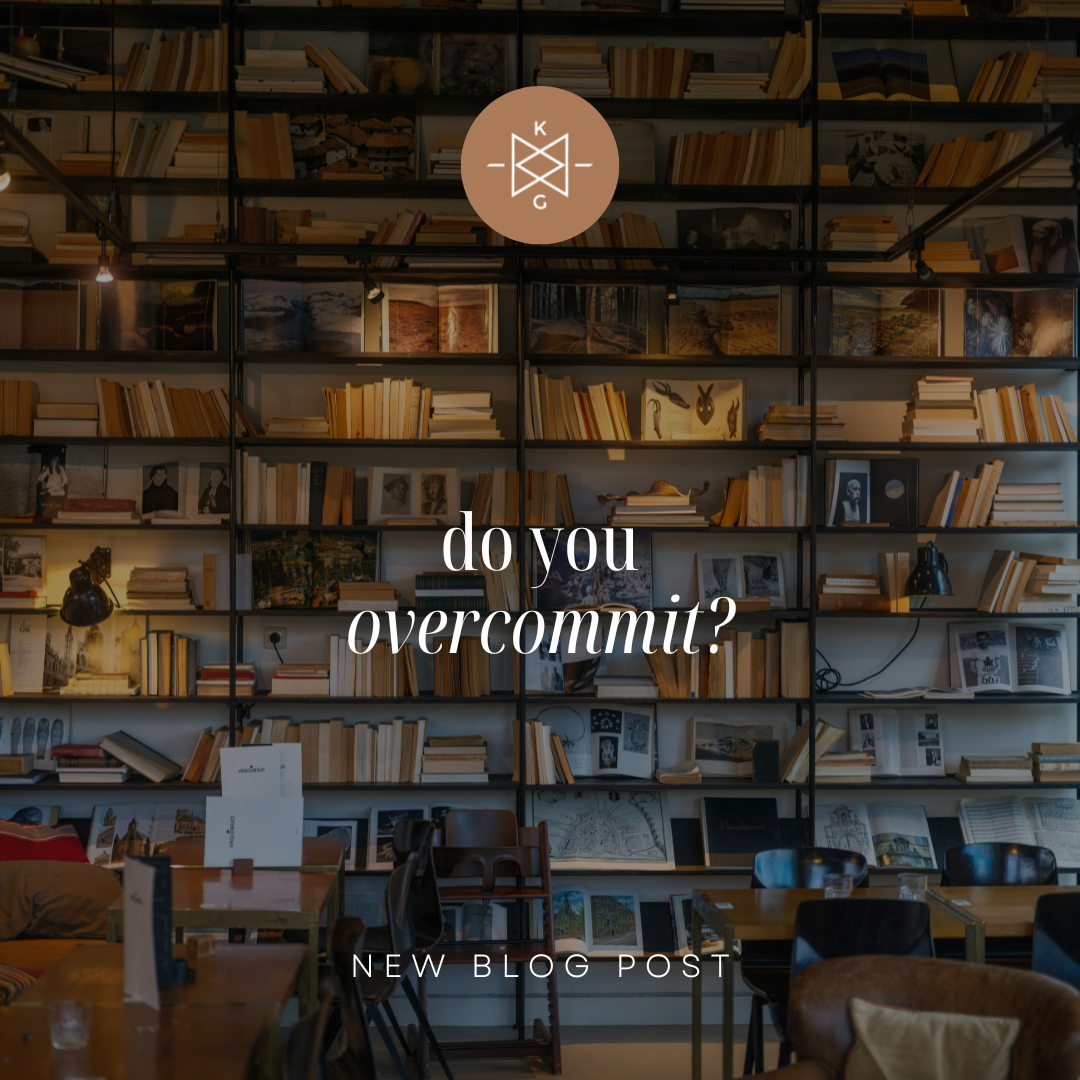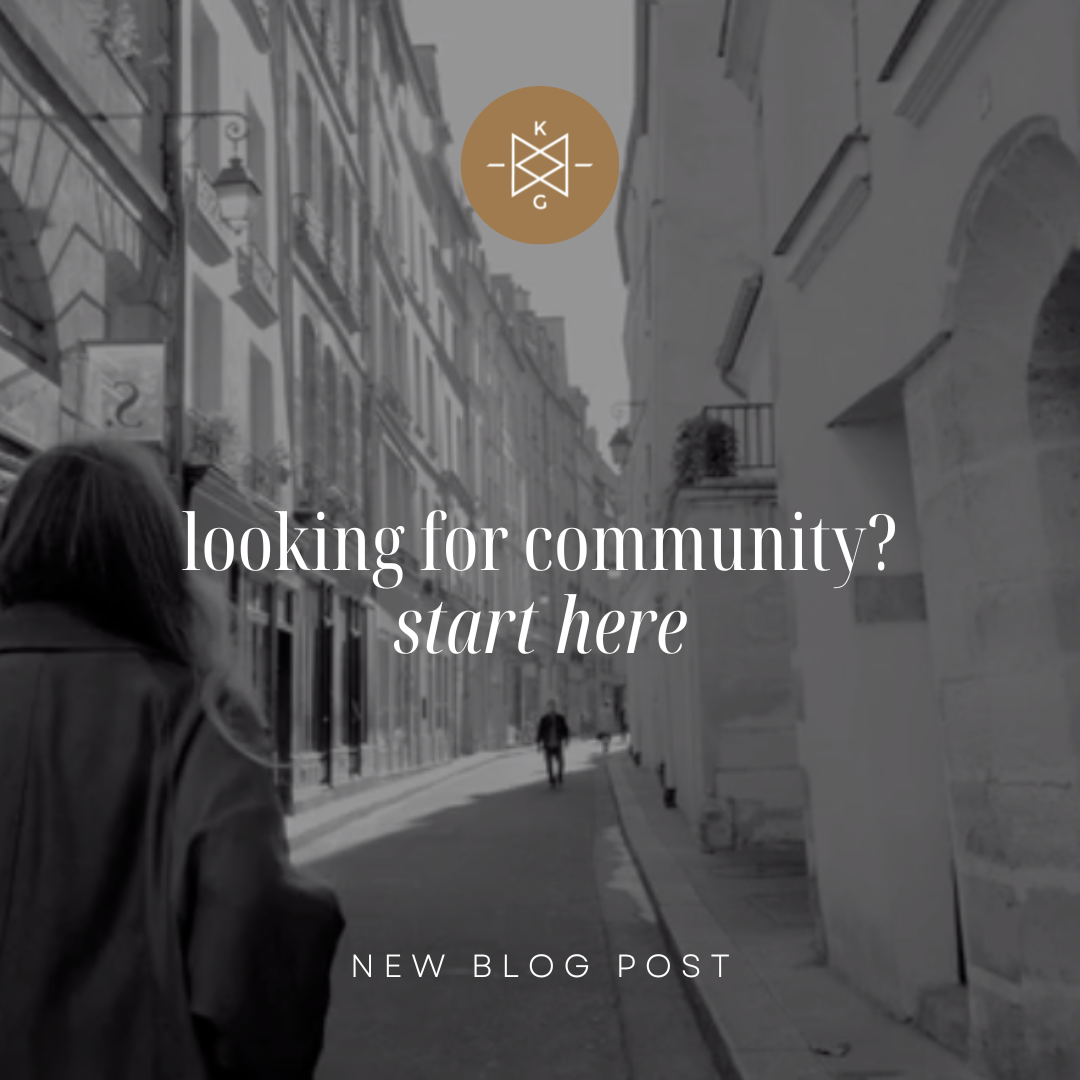
The Blog
Recently Featured
All Blogs
Your Brain on the Enneagram: A Chat with Dr. Jerome Lubbe
“Neuroplasticity tells us that we are capable of change. If we understand the function of the brain, we can improve our way of life.”
-Dr. Jerome Lubbe
Last week, I had the pleasure of interviewing Dr. Jerome Lubbe, an innovative thinker, functional neurologist, and author of The Brain-Based Enneagram: you are not A number, to talk Enneagram and the brain. It was truly fascinating.
The Enneagram stole my heart 14 years ago, but neuroscience and specifically, neuroplasticity came in hot on my radar in 2015. It was around then that I started studying trauma and its effect on our brains and bodies.
You may be wondering what the heck the brain has to do with the Enneagram. And that would be fair. That’s why I’m excited to unpack it a bit here today.
According to Dr. Jerome:
“Neuroscience tells us that our brains are plastic. They can and do change. Brain anatomy reveals that our operating system is composed of three primary components which mirror the structure of the Enneagram:
Brain-stem (instinct triad),
Right hemisphere (intuition triad), and
Left hemisphere (intellect triad).
Functional Neurology shows us how to target areas of the brain in order to physically improve the efficiency of the distinct natures of our identity.
The Enneagram integrates seamlessly. It provides language and definition for the process of development. It opens channels for growth by connecting values and expressions to brain function. It offers a guide for increasing physical, mental, and emotional efficiencies by practically implementing effective methods at effective times in effective ways. The Brain-Based EnneagramTM empowers every human being on the planet to engage with the brain, heal and rebuild after trauma, encourage and strengthen efficiencies, and nourish the relational, integrated nature of our whole identity.”
Simply stated, understanding how our brains work and develop habits of attention, thought, and emotion over time directly affects our behaviors and the arc of our wellbeing and experienced reality. When you integrate this knowledge of the brain with the effective self-understanding tool of the Enneagram, you are able to understand how you got where you are and can begin putting into practice a new, empowered way forward.
Sure, knowledge is power. However, once we are able to implement tools (the Enneagram) with this knowledge, power translates to growth and transformation.
Something I appreciate about Dr. Jerome’s approach to the Enneagram is his advocacy in our capacity for all nine types. He provides in his extensive research and testing that we can’t be reduced to one number. Instead, we have fluid elements of all nine that ebb and flow with life’s unfolding. This allows for the complexity of the human identity and is a sigh of relief to the boxy, stereotypical reign of type.
As I like to say, we have a dominant type (in my case, a four), yet also have strains of each of the other eight in my Whole Identity Profile, as he has pioneered.
The best part of all of this is that Dr. Jerome’s book The Brain-Based Enneagram: you are not A number, releases today! His personal journey, breadth of work, and available resources for us is simply stunning. I hope you’ll check out his book, especially if you’ve experienced frustration around knowing your type!
Love & Gratitude,
Katie
P.S. Tune in for my upcoming Instagram Live chat with singer/songwriter/podcaster, Seth Abram this Thursday at 11 am CT!
Shifting Shadows: Doing the Work of the Enneagram
“What you resist, persists.”
-Carl Jung
I grew up in the crown jewel of the deep south, Mobile, AL. We did many strange things like take ballroom dancing in fifth grade. It was hands down the most awkward thing I’d experienced until then, and I’ve always felt at home on a dance floor.
This was different though. Kids from a couple of neighboring schools would gather on a Thursday night at 5 o’clock in a big gymnasium at St. Ignatius Catholic church and learn all the old-school couples dances like the fox trot, waltz, and others I’ve purposely erased from my memory. The most unbearable part of it wasn’t learning the dances, it was learning the dances with the boys. They were hyper, smelly, and had no rhythm. They also thought they were beyond cool.
My favorite part of the night was when I spotted my mom’s minivan headlights in the carpool line. She’d swoop in and pick me up and we’d proceed to Checkers for the long-awaited chocolate milkshake(s). I had to take the edge off somehow.
Learning to dance with our shadow, or shameful parts can feel just as unpleasant. They are those parts of us that we’d rather not talk about. Early on, we learned to hide them from the world around us for acceptance—for survival. They are the parts of you that if someone saw, they might ultimately reject. You may be found out…and deemed unloveable.
What are the shadow parts you’d rather forget about? Is it depression, body shame, singleness, financial troubles, or even sexual trauma as a child? Whatever they are, much like the smelly boys at ballroom, we’ve got to learn to lean in, let go, and learn to dance with them.
The Enneagram is all about integration. The less compartmentalized, or fragmented we are, the more integrated and whole we will become. Just as we are made up of hundreds of different body parts, muscles, and organs, we also have so many different parts of our emotional, relational, and creative beings.
Often times in therapy sessions with clients, these parts come up. Take anxiety for example. Anxiety is an emotion or part of us that can be immobilizing. We often deal with it by numbing, fixing, or running from it. Anxiety is really just a shadow part of us that needs compassion and understanding just like, say, the creative part of us. When we stuff our anxiety and try to avoid it, we really just give it more power and as a result, create imbalance.
What might dancing with this anxious shadow look like? Well, first of all, we must listen to and get to know it. This allows us to cultivate empathy for that anxious part of us. After all, she has been working overtime for a while now to keep us performing, staying safe, and “on the ball.”
Shadow work is really a reckoning with parts of ourselves we’ve misjudged for a long time. The payoff is wholeness—flow. It’s realizing those parts we’ve been hiding for so long aren’t so terrible after all. In fact, they end up being the best parts because they are the most thorough teachers.
That anxious part of you desperately wants you to see her for who she really is: someone who deeply cares about your future, yet may go about it clumsily. She wants you to sit with her, commune with her, and realize the worst thing that can happen isn’t so bad in the end because you have other resilient parts of you that can step in and take over when she needs to sit the next song out.
Take a minute and visualize the part of you that you dislike, a lot. Perhaps you feel guilty about this part or constantly judge it. What does she look like? What is she doing? In the same minute, take one step towards her… then another, and another. You left her alone a long time ago and she feels abandoned, even scared. She knows you dislike her but she desperately longs to know you and play on the same team. She needs you big time.
If this feels completely terrifying, it should. Your brain is freaking out because it has no idea what it’s doing. Hang in there though, this is perhaps the most life-giving work you’ve ever done. Dancing with shadows or smelly boys is probably not on your bucket list. Oh but I bet I know what is…
Freedom.
Love & Gratitude,
Katie
Growing Beyond Your Enneagram Type
“So perhaps the best thing to do is stop writing instructions and get on with the book.”
-Winnie the Pooh
I believe the big reason people sour so quickly from the Enneagram is that it’s so misused by the rest of us. We become Bible-thumping zealots – throwing numbers and jargon around – insensitive to the fact that those around us are not interested or open to being objectified…and reduced. I mean, I get it. I was “that girl” who was an Enneagram evangelist there in the first couple of years: typing people left and right, preaching about growth and disintegration, and passing the plate of approval so everyone would “buy-in.”
And I meant well – truly. It’s been life-changing for me in my process, lending a clean lens to the distorted picture of my life I’d been living out of for so long. Yet it took me years to metabolize the fact that lasting Enneagram transformation speaks for itself. I didn’t have to. The proof is, as they say, in the pudding.
What I didn’t understand then that I do now is this: the Enneagram is not about becoming more like your type. The Enneagram is about living beyond type and into the true you. It’s about identifying your dominant type in order to fully understand it: strengths, weaknesses, motivations, values, and behaviors. But it’s not some Venus fly-trap, swallowing you up, lickety-split, right when you get up close. It’s about identifying the limiting parts of your personality in order to release and re-write the parts that no longer fit.
I’ll never forget my month-long Narrative Enneagram teacher training a few years back in Menlo Park, A. I was expecting the room to be filled with ego and a lot of it. Instead, I remember walking in the first day and much to my surprise, feeing pretty stumped. I couldn’t really figure out anyone’s type (though I couldn’t resist trying!). This group had done some deep inner work, and lot’s of it. They were living beyond their type, beyond the rough and ready edges of personality, into their authentic selves.
When we work with the Enneagram and live in that space, the edges do soften. Relationships run smoother, life’s inevitable stressors become more manageable, and the present moment – more vibrant.
Being reduced to a number is pretty lame. Understanding the truth about how you operate in the world and the story you’ve been living out of is life-changing. Why? Because that means you get to decide if it still serves you. If it doesn’t, guess what?
Yep….you can change it.
When you’re stuck in your type, you’re also stuck in the familiar past – so predictable.
You are so much more than a number, my friend. You are the writer, creator, director, and leading lady of your story, all in one!
Love & Gratitude,
Katie
Enneagram Subtypes and My Chat with Beatrice Chestnut
“The opposite of home is not distance, but forgetfulness.”
-Elie Wiesel
May is Enneagram Exploration month here on the blog. Last Thursday, we celebrated this lavishly, kicking things off with an Instagram Live discussion on Subtypes with, as I’ve heard her called, the Grand Dame of Subtypes, Beatrice Chestnut.
Beatrice is an author of two books, The Complete Enneagram: 27 paths to greater self-knowledge and The 9 Types of Leadership: Mastering the Art of People in the 21st Century Workplace.
Both are must-reads. The Complete Enneagram is my absolute favorite comprehensive book on the Enneagram, hands down. Not only does it provide a deep dive into subtypes, but it also provides an academic overview of the Enneagram and its history.
Beatrice is also a psychotherapist and coach, training practitioners and leaders to take their Enneagram knowledge to a deeper understanding and application both in work and life.
This is my passion as well: helping people harness the transformational power of the Enneagram in their own healing, relationships, and work.
I’ll be releasing that interview later this month, yet in the meantime, I want to parse out the major takeaways of our conversation. Subtypes are, after all, a bit complex in nature, and can be easily misunderstood or glossed over.
I believe they are a game-changer, lending a whole new level of understanding into who we are and why we do the things we do.
Let me tee this up by giving a quick overview of this system:
The Enneagram can be broken down into three Centers of Intelligence: the head, the heart, and the body. Within each center, or triad, there are nine interconnected personality types. This we know. If we peel back the next layer, we discover each of the nine types is actually a triad in itself containing three more definitive subtypes within the type. So, we know there are actually 27 types as opposed to nine. The three subtypes within each of the nine types is also connected to three driving animal instincts: self-preservation, social, or sexual (or one-to-one).
Here are the three biggest takeaways from our discussion:
Subtypes help clarify type. Discovering type is often a difficult process. This is partly because there are only nine types and billions of us so it can feel downright limiting and often reductive to identify our dominant type as there is such variance within type. If you struggle to identify your dominant type, try on the subtypes within the types you feel closest describe you. You may discover a perfect match.
Subtypes are more helpful as a growth tool than wings. Wings are talked about much more than subtypes. I learned this is because there hasn’t been clear, compelling content written about subtypes readily available. Also, there is great confusion as The Wisdom of the Enneagram, the Riso/Hudson classic, calls them instinctual variants. Also, wings tend to be easier to identify. They are physically on either side of your dominant type. However, Beatrice explained that wings are more of a flavoring of type that can shift throughout life. Subtypes can be used in a deeper way to grow beyond limiting, unconscious behavior.
Instinct + Passion = Subtype. It’s so important to note the nuance of subtypes within each type. Like I said earlier, no two subtypes are alike even though there are the same three choices for each type. Instead, they can be explained by a person's predominant driving instinct (self-preservation, social, or sexual) fused with the specific passion, or emotional motivator, of a person’s type. This creates a distinct character type within each of the nine to really sink your teeth into. For me, this looks like the self-preservation instinct, as it is my dominant, mixed with envy, the passion of a type four.
To wrap it up and put a bow on it, I love working with subtypes because quite simply, they help us develop more balance where there is imbalance within our personality.
To learn more about the Enneagram and subtypes, join my monthly Enneagram and Self-Care program, The Practice.
Love & Gratitude,
Katie
Resilience and How to Practice Joy
“Joy, collected over time, fuels resilience.”
-Brené Brown
Are you afraid of joy?
I know…bizarre-o question.
Yet, after over a decade working as a therapist, I’ve had a curious finding. Humans are, indeed, scared of joy. Beyond anger, sadness, grief, shame, you name it, we are more resistant to feel prolonged joy than other emotions.
Why is this?
I call it “the other shoe syndrome.” If we bask in moments of joy, small though they may be, eventually, the other shoe will drop, leaving us disappointed, or perhaps ill-prepared. We’re so afraid of the let down that we settle for scarcity and self-protect.
In other words, joy is too risky. Something terrible might happen on the other side so we opt out altogether and dumb down desire. That way, if we run tactics on worst-case scenarios, we have nothing to lose.
After all, we have what’s called a negativity bias, or gravitation towards negative stimuli around us. Fear has kept us alive as a species through the ages, yet we don’t really need it to stay alive in the same way our primal ancestors did. This negativity bias has a strong evolutionary pull on our awareness, making joy more of a learned practice.
Brene Brown says it best, “When we lose our tolerance for vulnerability, joy becomes foreboding. As a result, we dress-rehearse tragedy and beat it (vulnerability) to the punch.”
Not so fast, Cowboy. As humans, we simply can’t opt-out of vulnerability.
We must risk something along the way. Expansion requires it. So does love. In both, there are no guarantees.
It’s worth noting that the goal here is not the absence of struggle. You may have noticed lately, struggle is an integral part of life. The goal is resilience, or the ability to recover quickly from life’s challenges.
As we learn to practice joy, this opening up to hope amidst life’s challenges, guess what grows? Yep…resilience.
How do we practice joy? I’m convinced it’s a three-fold process.
When Joy flashes her tooth-y grin in your direction, don’t look the other way—get curious. Flirt with her, even if she’s there for just a minute.
Then what?
Pivot to gratitude. Research shows the most joyful people in the world are also the most grateful. This blows far beyond circumstance. It’s a result of practice. When we pivot to gratitude instead of scarcity, we build up new accessory muscles we didn’t know existed. This, in turn, becomes habit over time.
In that practice of gratitude for this joyful moment—breathe it in—stay with it. Brain science tells us it takes three deep breaths or eleven seconds to form a new neuropathway in your brain. By basking in these joyful moments, you are literally rewiring your brain to make you a more wholehearted, receptive person.
These simple sightings of joy are oxygen for the soul. I think we can all agree, we need it — now more than ever.
Love & Gratitude,
Katie
P.S. Join me on Instagram Live this Thursday at 2 pm CT to talk Enneagram Subtypes with Author, Psychotherapist, and Expert Beatrice Chestnut. Follow me on Instagram.







































